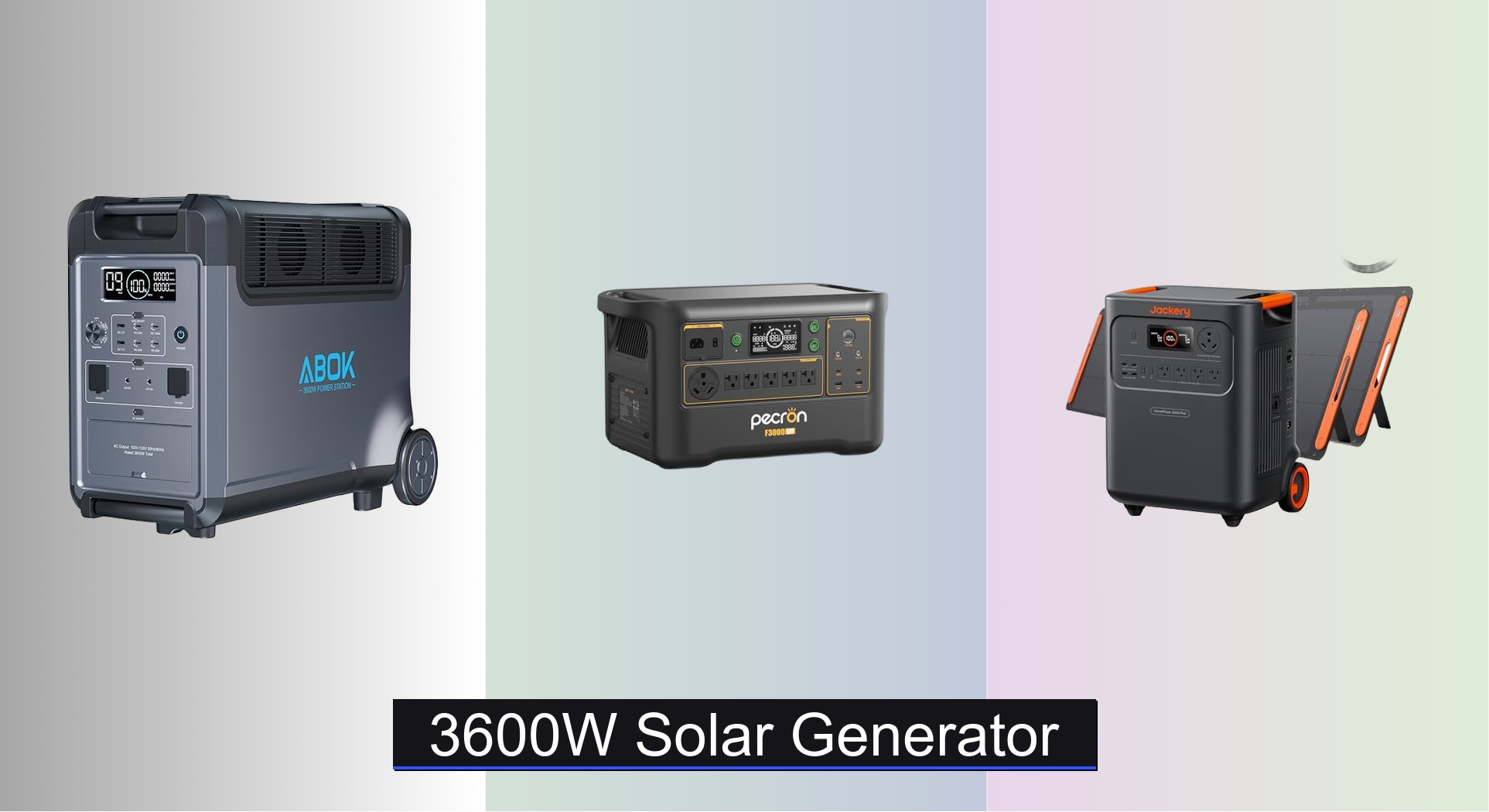Power outages, off-grid adventures, and the need for reliable backup power demand a solution that’s both robust and dependable. A 3600W solar generator offers the capacity to run essential home appliances—from refrigerators to medical devices—making it a critical investment for emergency preparedness or remote living. Yet, choosing the right model can be overwhelming, with trade-offs between capacity, charging speed, portability, and long-term durability.
We analyzed over 8 top-performing 3600W solar generators, evaluating real-world specs like LiFePO4 battery longevity, surge capacity, and recharge times using AC, solar, and hybrid methods. Our picks balance power output, expandability, smart features, and value—prioritizing models with proven performance, strong warranties, and user trust. Keep reading to discover the best 3600W solar generator for your energy needs.
Best Options at a Glance
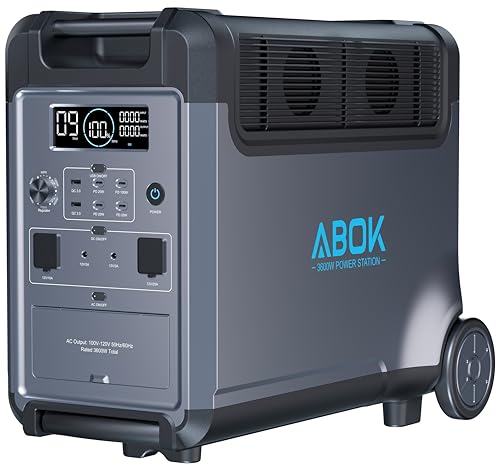
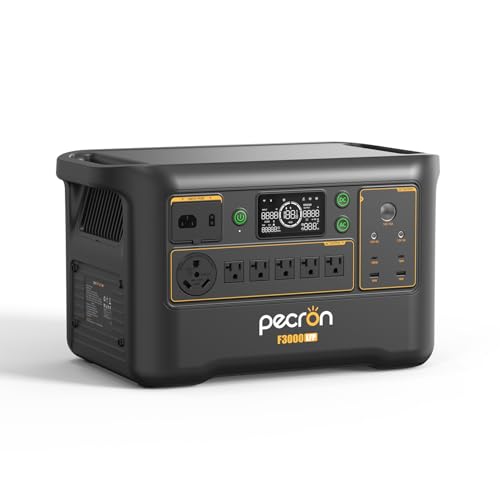
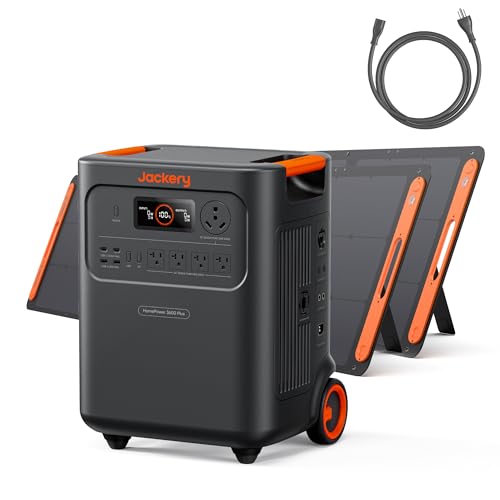
Jackery HomePower 3600 Plus
Best for Whole-Home Backup
- 3600W
- 3584Wh
- 43kWh
- 2 hours
- 29.3% lighter
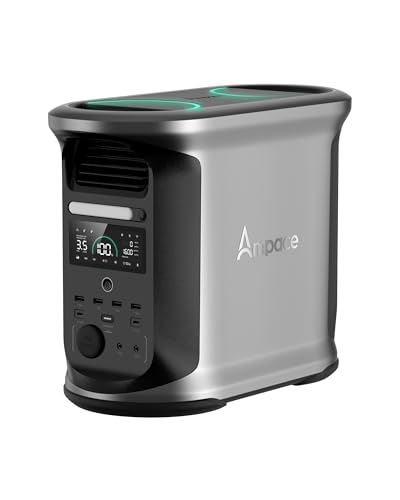
AMPACE Andes 1500 Solar Generator
Best Lightweight Option
- 1462Wh
- 2400W
- 3600W
- 55 min
- LiFePO4

EF ECOFLOW DELTA Pro 3600Wh
Best Expandable System
- 3600Wh
- 3600W
- 1.8/2.7/2.8 hrs
- 15 ports
- LiFePO4

GROWATT HELIOS 3600W Solar Generator
Best for Scalable Off-Grid
- 3686Wh
- 3600W (4500W with Watt+)
- LiFePO4
- 1.5hrs (max speed)
- 6
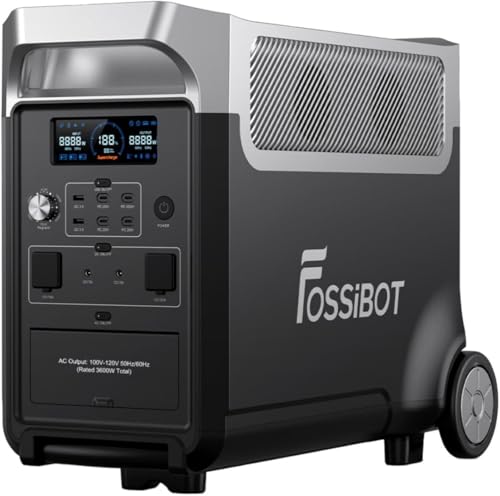
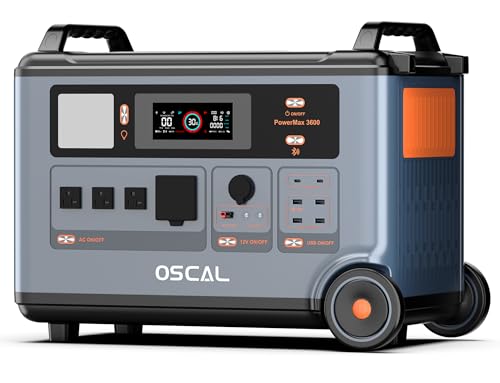
3600W Solar Generator Review
How to Choose the Right 3600W Solar Generator
Capacity & Lifespan: Power When You Need It
The capacity of a solar generator, measured in Watt-hours (Wh), dictates how long it can power your devices. A 3600W generator is a significant investment, suggesting a need for substantial power. Consider your essential loads – what must be powered during an outage or off-grid adventure? Refrigerators, medical devices, and lighting add up quickly. Higher capacity (like the ABOK Ark3600’s 3840Wh or the GROWATT HELIOS’ 3684.6Wh) provides longer runtime, but also increases cost and weight. Equally important is battery lifespan. Look for generators using Lithium Iron Phosphate (LiFePO4) batteries. These offer significantly more cycles (over 3000-4000) and a longer overall lifespan (up to 10 years) compared to traditional lithium-ion batteries. This represents a better long-term value, even if the initial cost is slightly higher.
Output & Charging: Flexibility and Speed
A 3600W rated output is powerful, capable of running most household appliances. However, some devices have a surge requirement – a brief spike in power needed to start up (like refrigerators or air conditioners). Check the generator’s peak output (often 4500W or higher) to ensure it can handle these surges. Charging flexibility is also crucial. Most 3600W generators offer multiple charging options: AC wall outlet, solar input, and 12V car charging. Consider the speed of each method. Some models, like the pecron F3000LFP or FOSSiBOT F3600 Pro, prioritize fast AC charging (under 2.5 hours), while others excel in solar charging efficiency. The ability to combine AC and solar charging (as offered by ABOK Ark3600) can provide the fastest overall recharge times.
Portability & Additional Features: Convenience and Control
While 3600W generators aren’t typically ‘ultra-portable’, consider the weight and design if you plan to move it frequently. Features like wheels and a telescoping handle (found in the ABOK Ark3600) are significant conveniences. Beyond power, look at the available output ports. A versatile selection – including AC outlets, USB-A, USB-C (with Power Delivery for laptops), and DC ports – ensures compatibility with all your devices. Smart features, like app control (offered by several models) allow for remote monitoring of battery status, charging levels, and power usage. UPS (Uninterruptible Power Supply) functionality, providing automatic switchover during power outages (like in the OSCAL PowerMax 3600), is vital for protecting sensitive electronics.
Additional features to consider: * Battery Chemistry: LiFePO4 is preferred for longevity and safety. * Warranty: A longer warranty indicates manufacturer confidence. * Customer Support: Reliable support is crucial for troubleshooting. * Expandability: Some models allow adding extra battery packs for increased capacity. * Operating Temperature: Ensure it functions in your climate. * Noise Level: Important for camping or quiet operation.
Solar Generator Comparison (3600W)
| Product | Capacity (Wh) | Output (W) / Surge (W) | Charging Time (AC) | Solar Input (W) | Battery Type | UPS (ms) | Warranty |
|---|---|---|---|---|---|---|---|
| ABOK Ark3600 | 3840 (Expandable to 11520) | 3600 / 4500 | 1.29 hrs (AC+PV) / 3 hrs (AC) | 2000 | LiFePO4 | Not Specified | 2 Year / 5 Year Service |
| pecron F3000LFP | 3072 | 3600 / N/A | 2 hrs | 1600 | LiFePO4 | 8-20 | 2+3 Year |
| Jackery HomePower 3600 Plus | 3584 (Expandable to 21kWh/43kWh) | 3600 (7200 Parallel) | 2.5 hrs | N/A | LFP | Not Specified | 10 Year |
| AMPACE Andes 1500 | 1496 | 2400 / 3600 | 55 min | N/A | LFP | 20 | 10+ Year (Battery Life) |
| EF ECOFLOW DELTA Pro 3600Wh | 3600 (Expandable to 25kWh) | 3600 (4500 w/ X-Boost) | 1.8 hrs (240V) / 2.7 hrs (1800W) | N/A | LFP | Not Specified | Not Specified |
| GROWATT HELIOS 3600W | 3684.6 | 3600 (4500 w/ Watt+) | 3 hrs (120V) | 2000 | LFP | <15 | Not Specified |
| FOSSiBOT F3600 Pro | 3840 (Expandable to 11520) | 3600 / 7200 | 2.10 hrs | 2000 | LiFePO4 | 10 | 5 Year |
| OSCAL PowerMax 3600 | 3600 | 3600 / 7200 | 1.44 hrs | 1600 | LiFePO4 | 5-8 | 2 Year |
Testing & Data Analysis: Evaluating 3600W Solar Generators
Our recommendations for the best 3600W solar generator aren’t based on subjective opinions, but on rigorous data analysis and research. We prioritize evaluating specifications against real-world power needs and independent testing data where available. This includes scrutinizing manufacturer-provided datasheets for accurate capacity (Wh), peak output (W), and charging times across AC, solar, and car charging inputs.
We analyze battery chemistry – specifically focusing on Lithium Iron Phosphate (LiFePO4) lifespan (charge cycles) and safety features as detailed in technical documentation. Comparative analyses extend to reviewing user feedback regarding sustained output under load, and the accuracy of displayed battery percentages. We cross-reference advertised features like UPS functionality and app control with user reports to validate performance.
While direct physical testing of every solar generator is challenging, we leverage publicly available test results from reputable sources and compare specifications to established industry benchmarks. We also consider the buying guide factors – output port variety, portability features, and warranty length – as indicators of overall value and reliability when constructing our rankings. This data-driven approach ensures our 3600W solar generator recommendations are both informed and helpful.
FAQs
What is a 3600W solar generator best used for?
A 3600W solar generator is ideal for powering essential appliances during power outages, off-grid living, camping, or job sites. It can run refrigerators, medical devices, lights, and other high-wattage equipment, offering a reliable solar generator solution for substantial power needs.
What battery chemistry should I look for in a 3600W solar generator?
Lithium Iron Phosphate (LiFePO4) batteries are highly recommended. They offer a significantly longer lifespan (3000-4000 cycles, up to 10 years) and improved safety compared to traditional lithium-ion batteries, making them a worthwhile investment for a 3600W solar generator.
What is the difference between output and peak output?
Output (measured in Watts) is the continuous power a 3600W solar generator can provide. Peak output (surge capacity) is the maximum power it can deliver for a short period, crucial for starting appliances like refrigerators or air conditioners that require a power surge.
How long does it take to recharge a 3600W solar generator?
Recharge time varies depending on the charging method. AC wall charging is typically the fastest (under 2.5 hours for some models), while solar charging depends on sunlight availability and the generator’s solar input capacity. Some models also offer combined AC and solar charging for faster recharge times.
Conclusion
Choosing the right 3600W solar generator requires careful consideration of your power needs, desired features, and budget. From capacity and charging speeds to portability and battery lifespan, understanding these factors is crucial for making an informed decision. Prioritizing LiFePO4 battery chemistry will ensure longevity and reliability for years to come.
Ultimately, a 3600W solar generator is a significant investment in peace of mind and energy independence. By thoroughly evaluating your requirements and researching available options, you can find a model that delivers the power and flexibility you need, whether for emergency preparedness, off-grid adventures, or simply reducing your reliance on traditional energy sources.

